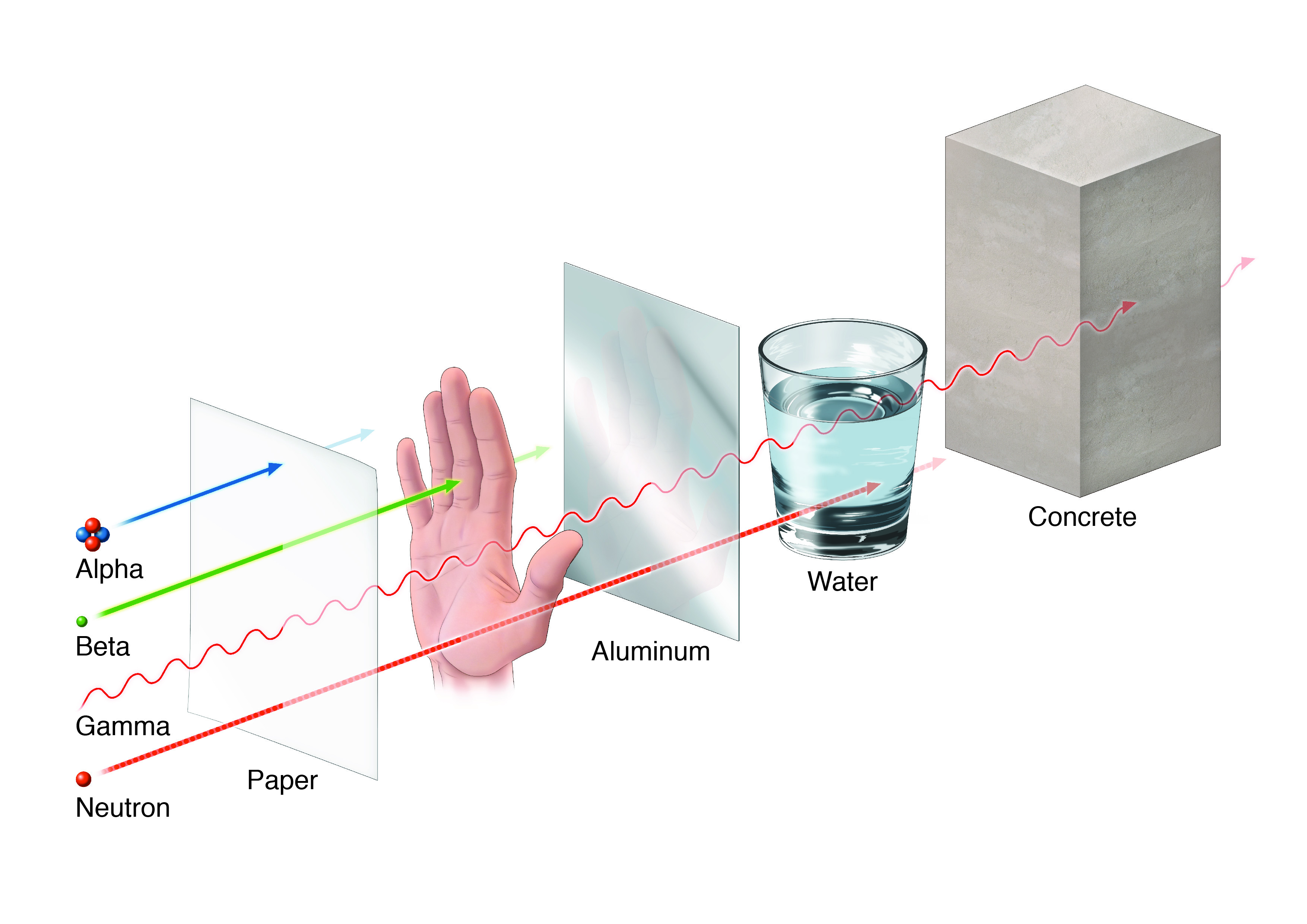What is Radiation?
Radiation is energy that travels in invisible waves or rays. Exposure to radiation is an everyday occurrence – in fact, it has always been a part of life on Earth.
Radiation can be natural or man-made.
Natural:
- The sun emits ultraviolet rays that can cause sunburn.
- Granite, a common rock used in kitchen counters, is a natural source of radiation.
Man-made:
- Doctors use X-rays and MRIs to see inside patients with broken bones and other problems.
- A microwave uses a form of radiation to cook food.
Understanding Types of Radiation
There are two types of radiation: non-ionizing (low frequency) and ionizing (high frequency). Both types can be harmful in excessive amounts. Fortunately, scientists, nuclear engineers and doctors understand radiation and know how to harness its benefits and protect us from its dangers.
Non-ionizing radiation emits enough energy to move or “excite” atoms. For example, microwave ovens use non-ionizing radiation to cook food. The radiation vibrates water contained in food, which creates heat. That heat cooks the food.
Ionizing radiation emits enough energy to change the structure of an atom, which can damage biological cells. For instance, a sunburn is a type of radiation damage.
In nuclear facilities, technicians focus on four types of ionizing radiation: alpha, beta, gamma and neutrons. Alpha radiation is too weak to penetrate most objects. Beta radiation is stronger, while gamma radiation is the strongest. Neutrons can penetrate many objects, but are slowed by water.

Measuring Radiation
Radiation doses are measured in an international unit called a Sievert (Sv). Typically, radiation doses are so low that they are measured in milliSieverts (mSv) or one-thousandth of a Sievert.
Because exposure to radiation happens every day, it is helpful to understand the average amount of radiation that people receive from natural and man-made sources.
For instance, the average annual radiation dose that a person receives from food and water is nearly 0.3 mSv. At the same time, the average annual radiation dose that the public receives from nuclear power is 0.0002 mSv.
Managing Radiation in Nuclear Energy Plants
The nuclear energy industry follows international best practices and standards to protect the public, workers and the environment. Modern nuclear energy plants use many barriers to protect people from radiation.
Every barrier provides another layer of protection. In addition, the intensity of radiation decreases with distance from the source. Nuclear energy plants add distance from radioactive sources by incorporating large open spaces around the facility that the public cannot enter.
Radiation Protection
All restricted areas of the plant are clearly marked.
In addition, there are three simple ways to limit exposure to radiation.
- Create a barrier: Barriers made of steel, concrete or water provide protection from radiation. This is why the reactor is inside several layers of thick walls made of steel and concrete. It is also why used fuel is stored in concrete and steel-lined pools of water.
- Minimize time: The less time a person spends near a source of radiation, the less radiation they receive.
- Increase distance: The farther away a person is from a source of radiation, the less radiation they receive. This is one of the reasons why there are restricted areas of the plant.
